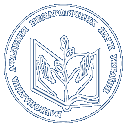- Bazyma, Nataliia (orcid.org/0000-0001-7651-3812), Usyk, Dmytro (orcid.org/0000-0003-0947-298X), Omelchenko, Iryna (orcid.org/0000-0002-4698-0273), Kobylchenko, Vadym (orcid.org/0000-0002-7717-5090), Babych, Nataliia (orcid.org/0000-0001-8923-8960) and Tsymbal-Slatvinska, Svitlana (orcid.org/0000-0002-2732-5716) (2022) Results of Verification of the Methods of Speech Activity Formation in Children with Autistic Disorders BRAIN. Broad Research in Artificial Intelligence and Neuroscience, 1 (13). pp. 88-111. ISSN 2068-0473
|
Text
Ст. Базима, Омельченко, Кобильч та ін.pdf Download (564kB) |
Abstract
The speech activity formation is a pretty complex multifaceted long-term process, particularly, formation of speech activity in children with autistic disorders. According to the research objectives, we have designed corrective-developmental methods of formation of speech activity in pre-school children with autistic disorders. Working on the corrective-developmental methods, we have considered the research results, program requirements to the speech development of elder pre-schoolers, level of speech capabilities of every child, law regularities of the speech function development in ontogenesis and scientific-methodical principles and aspects of the speech development correction for children with speech disorders. As per the principles that we have substantiated, the research-diagnostic, correction-activity and function-speech stages of our methods show their outer and inner bounds. Moreover, the identified stages of the corrective-developmental methods are closely interrelated and characterised with their combination as a continuous pedagogical process; and the knowledge, skills and habits obtained by elder pre-schoolers with autistic disorders are considered as an integral system. We have included initiative as capability to speak in a monologue, motivation as capability to speak in a dialogue, content-richness as saturation of the active oral speech with language units clear to a child with autistic disorders (words, word combinations, phrases, sentences) as well as sound imitations, sound complexes and vocalisation to the main components of speech activity. Thus, after entrenching our methods we have processed and generalised the results of identifying levels of formed speech activity as capability to speak in a monologue and dialogue and use of particular language units according to the quantitative indices.
| Item Type: | Article |
|---|---|
| Keywords: | Communication-speech environment, senior preschool age, monologue speech, motivation to speak in a dialogue, oral speech, formation levels. |
| Subjects: | Science and knowledge. Organization. Computer science. Information. Documentation. Librarianship. Institutions. Publications > 3 Social Sciences > 37 Education > 376 Education, teaching, training of special groups of persons. Special schools > 376.3 Виховання та освіта осіб із вадами зору, слуху, мови та нервовими захворюваннями. |
| Divisions: | Mykola Yarmachenko Institute of special education and psychology of National academy of educational sciences of Ukraine > Department of psychological and pedagogical support of children with special needs |
| Depositing User: | д. психол. Ірина Миколаївна Омельченко |
| Date Deposited: | 04 Apr 2022 11:57 |
| Last Modified: | 26 Jan 2024 11:59 |
| URI: | https://lib.iitta.gov.ua/id/eprint/730160 |
Downloads
Downloads per month over past year
Actions (login required)
 |
View Item |




